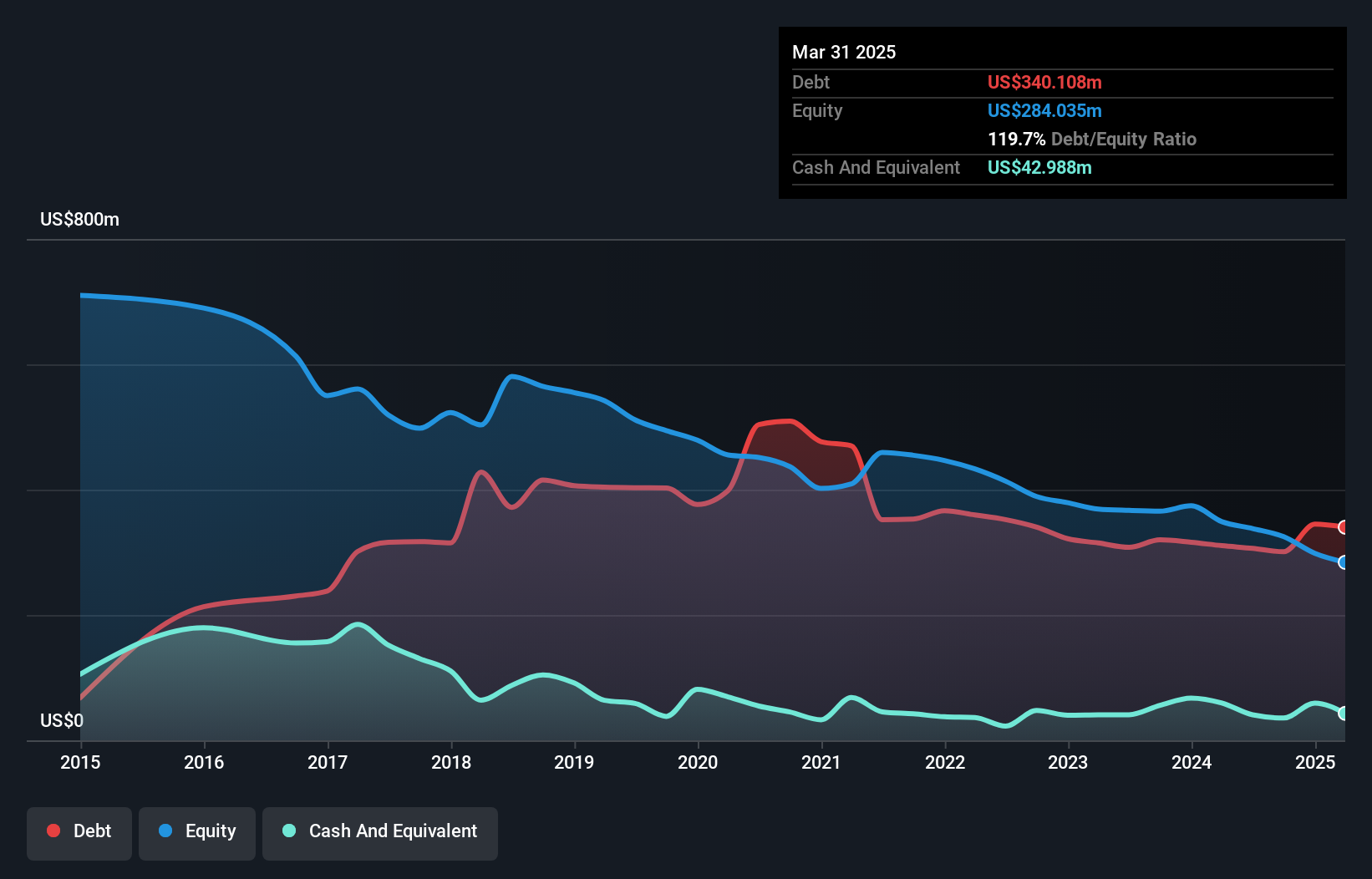- United States
- /
- Energy Services
- /
- NYSE:SMHI
Is SEACOR Marine Holdings (NYSE:SMHI) Weighed On By Its Debt Load?
Some say volatility, rather than debt, is the best way to think about risk as an investor, but Warren Buffett famously said that 'Volatility is far from synonymous with risk.' So it seems the smart money knows that debt - which is usually involved in bankruptcies - is a very important factor, when you assess how risky a company is. We can see that SEACOR Marine Holdings Inc. (NYSE:SMHI) does use debt in its business. But is this debt a concern to shareholders?
What Risk Does Debt Bring?
Generally speaking, debt only becomes a real problem when a company can't easily pay it off, either by raising capital or with its own cash flow. In the worst case scenario, a company can go bankrupt if it cannot pay its creditors. While that is not too common, we often do see indebted companies permanently diluting shareholders because lenders force them to raise capital at a distressed price. Of course, the upside of debt is that it often represents cheap capital, especially when it replaces dilution in a company with the ability to reinvest at high rates of return. When we think about a company's use of debt, we first look at cash and debt together.
What Is SEACOR Marine Holdings's Net Debt?
The image below, which you can click on for greater detail, shows that at March 2025 SEACOR Marine Holdings had debt of US$340.1m, up from US$310.6m in one year. However, it also had US$43.0m in cash, and so its net debt is US$297.1m.

How Healthy Is SEACOR Marine Holdings' Balance Sheet?
The latest balance sheet data shows that SEACOR Marine Holdings had liabilities of US$75.4m due within a year, and liabilities of US$334.7m falling due after that. On the other hand, it had cash of US$43.0m and US$74.4m worth of receivables due within a year. So its liabilities outweigh the sum of its cash and (near-term) receivables by US$292.8m.
The deficiency here weighs heavily on the US$148.0m company itself, as if a child were struggling under the weight of an enormous back-pack full of books, his sports gear, and a trumpet. So we'd watch its balance sheet closely, without a doubt. At the end of the day, SEACOR Marine Holdings would probably need a major re-capitalization if its creditors were to demand repayment. The balance sheet is clearly the area to focus on when you are analysing debt. But it is future earnings, more than anything, that will determine SEACOR Marine Holdings's ability to maintain a healthy balance sheet going forward. So if you want to see what the professionals think, you might find this free report on analyst profit forecasts to be interesting.
Check out our latest analysis for SEACOR Marine Holdings
Over 12 months, SEACOR Marine Holdings made a loss at the EBIT level, and saw its revenue drop to US$264m, which is a fall of 6.0%. We would much prefer see growth.
Caveat Emptor
Importantly, SEACOR Marine Holdings had an earnings before interest and tax (EBIT) loss over the last year. Indeed, it lost a very considerable US$24m at the EBIT level. When we look at that alongside the significant liabilities, we're not particularly confident about the company. It would need to improve its operations quickly for us to be interested in it. Not least because it burned through US$39m in negative free cash flow over the last year. That means it's on the risky side of things. When analysing debt levels, the balance sheet is the obvious place to start. However, not all investment risk resides within the balance sheet - far from it. For instance, we've identified 2 warning signs for SEACOR Marine Holdings that you should be aware of.
If you're interested in investing in businesses that can grow profits without the burden of debt, then check out this free list of growing businesses that have net cash on the balance sheet.
New: Manage All Your Stock Portfolios in One Place
We've created the ultimate portfolio companion for stock investors, and it's free.
• Connect an unlimited number of Portfolios and see your total in one currency
• Be alerted to new Warning Signs or Risks via email or mobile
• Track the Fair Value of your stocks
Have feedback on this article? Concerned about the content? Get in touch with us directly. Alternatively, email editorial-team (at) simplywallst.com.
This article by Simply Wall St is general in nature. We provide commentary based on historical data and analyst forecasts only using an unbiased methodology and our articles are not intended to be financial advice. It does not constitute a recommendation to buy or sell any stock, and does not take account of your objectives, or your financial situation. We aim to bring you long-term focused analysis driven by fundamental data. Note that our analysis may not factor in the latest price-sensitive company announcements or qualitative material. Simply Wall St has no position in any stocks mentioned.
About NYSE:SMHI
SEACOR Marine Holdings
Provides marine and support transportation services to offshore oil, natural gas, and windfarm facilities in the United States, Africa, Europe, the Middle East, Asia, and Latin America.
Low risk and slightly overvalued.
Similar Companies
Market Insights
Community Narratives




